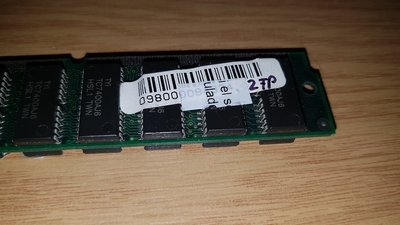First post, by Cga.8086
i have this question for ages
back in the day there was no good ram information on the stick
hell in some you dont even know how much megs does the ram stick have.
in some you see an edo sticker. but thats not found in other edo sticks.
so lets suppose you see a ram stick online. how do you know of it is edo or fpm? if someone removed the edo sticker
asking this because there is a ton of 486 mobos that only work with fpm

